I never tell my kids what to do. I always ask politely.
Why? Because I hate being bossed around.
Doesn’t everybody?
Or is my assumption too embedded in my role as an artist, a group of rebels if ever there was one. Not to mention American: we’re as entitled a group of “exceptional” people as you’re likely to find.
Are there places in the world where people relish being ordered about? Really, how mutable is the human condition?. When I see images of women in full niqab, or hell, even the actual woman I saw on Michigan Avenue in Chicago, I assume they’d rather be liberated.
Who wouldn’t want to drive a car? Or be allowed out of the house without a male escort? But am I mistaken? Do people like things just as they are? Perhaps culture runs deeper than we realize?
And what about autocratic societies that lack freedom of speech? How do people acclimate? Is it so repressive that you go out of your mind? Or do most folks easily adjust to a world of winks and sideways glances, rather than brash proclamations?
What is it really like to be Chinese, I wonder, in this century that seems theirs for the taking? Does the allure of wealth brought by Capitalism outweigh the frustration at having so little information filtered by the Great Firewall?
Again, I don’t know. (Am I attempting to break my own record for most rhetorical questions in one book review column?)
Regardless, I now have a much better real-world vision of what life is like in the Coastal regions of the Rising Tiger/Ancient Dragon, thanks to “Coastline,” a new-ish book by Zhang Xiao, published by Jiazazhi Limited. Before I ramble further, I will henceforth state that this is a really fantastic book, but it took some getting used to.
Open it up, and there’s an insert, folded over multiple times, and stuck in a little folder on the inside cover. I took it out, opened up, and found a few English essays among a larger grouping of what I took to be Mandarin text.
I looked at it, pondered for a moment, and then put it away. I wasn’t interested in being told what to think about the photos before I saw them. Return later, I figured. (So I did. The artist’s statement was far more enlightening than the mistranslated/typo-ridden Mandarin essays. Example: “Though the coastline separates the lad from the sea…”)
I began to leaf through the pages, and wasn’t yet captivated. Wow, I thought, this is a thick book. How many f-cking pictures are there?
Now, I often write about why a narrative structure is so important in a book. Progression, inter-relationships, ad nauseum. But I also admit that looking at books is experiential, and you have to be willing to bend to the situation.
So I began to flip towards the back. There are more than 100 photos, so it was a bit daunting to be so linear. To follow the rules. To be told what to look at, and when.
Flip forward. Flip back. Jump around, and the book comes to life. There is so much “LIFE” on display. Oddities, and normality, all rendered in a subtle color palette that announces itself over time.
There are pinks and blues and yellows, but he also handles brown and ochre with dignity. Two women wear white wedding dresses. Don’t they wear red in China at such moments? Is it a Westernization thing, or was I simply misinformed?
In one run, we get a man’s back, a man with his hand suggestively on another man’s back, and then a man doing pushups on the beach. Clever and cool. (There is a sub-theme of people doing physical exercises in random situations.)
Broadcasters interview subjects on the beach, a (drunk?) man from the provinces eyes the camera from beneath a metal stanchion, an ostrich runs amok, a dude walks down the street with his ass hanging out, and we close with a father (I assume) walking with his son, who’s wearing a white eye-patch.
A bonfire in front of a fake octopus. Swimmers. Fishermen. More and more.
Really, it’s a terrific collection of images, and most definitely shows us things we haven’t seen before. Not with this degree of authenticity, at least.
But can things actually be authentic in such situations? Do artists have to have their work censored, or approved, for books like this to be published in China? Again, I don’t know. But I’m more curious than ever before what life looks like in China 2015, and that is always the marker of an excellent photo-book.
Bottom Line: Awesome, thorough look at Coastal life in China



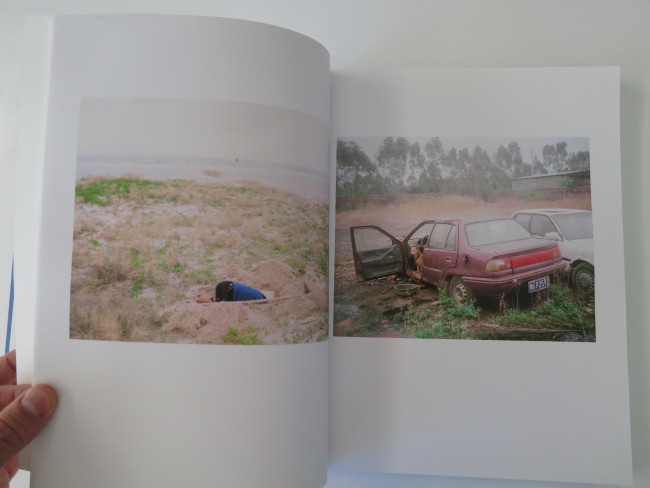


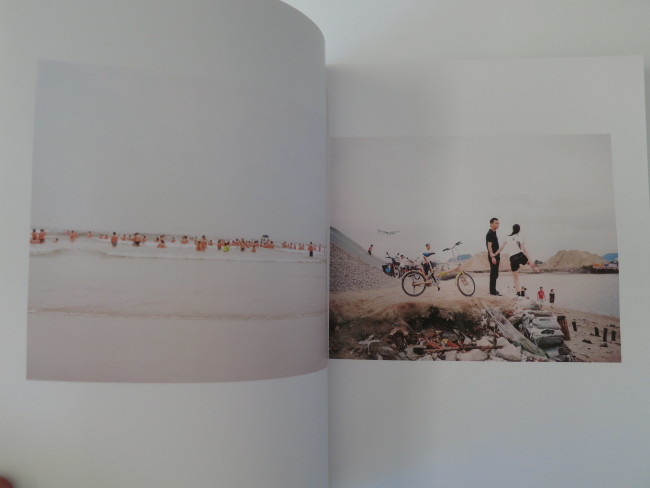
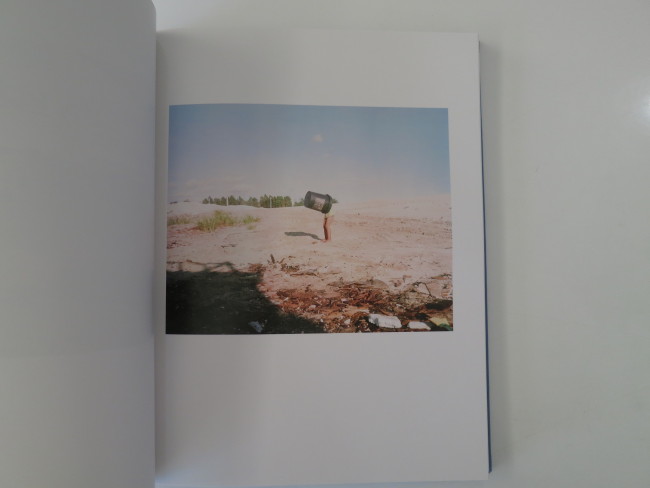
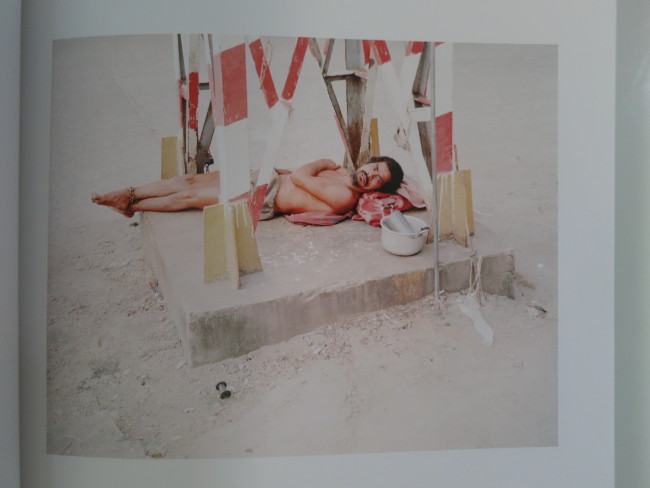

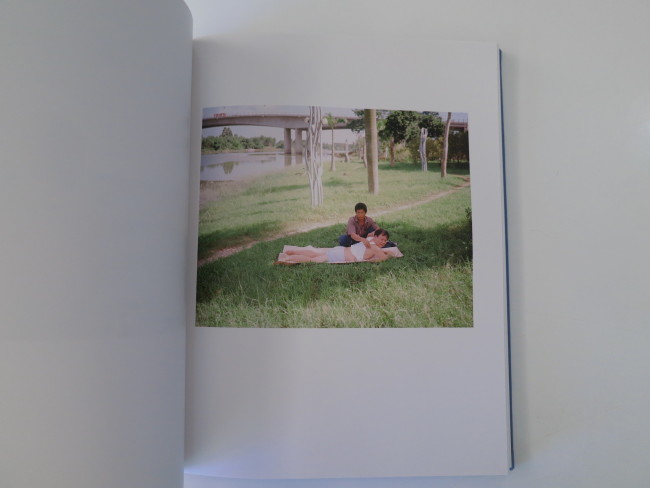

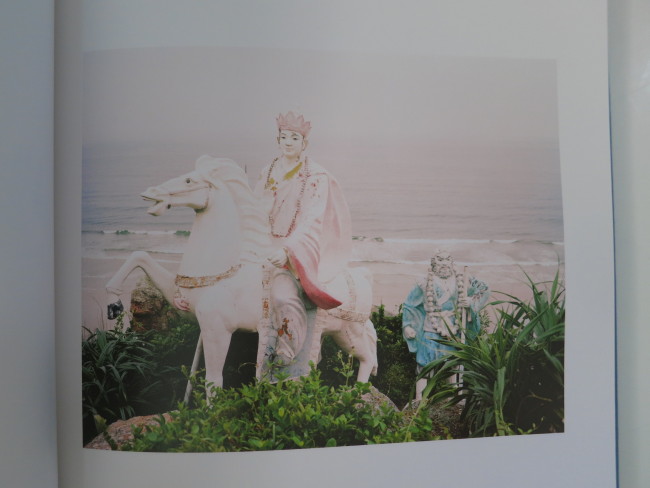
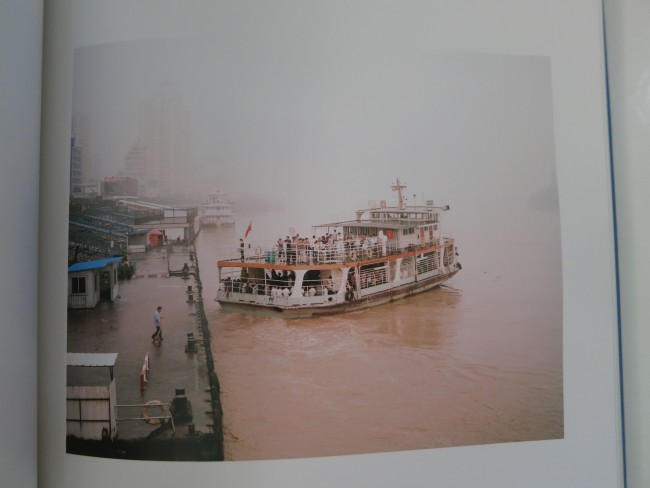
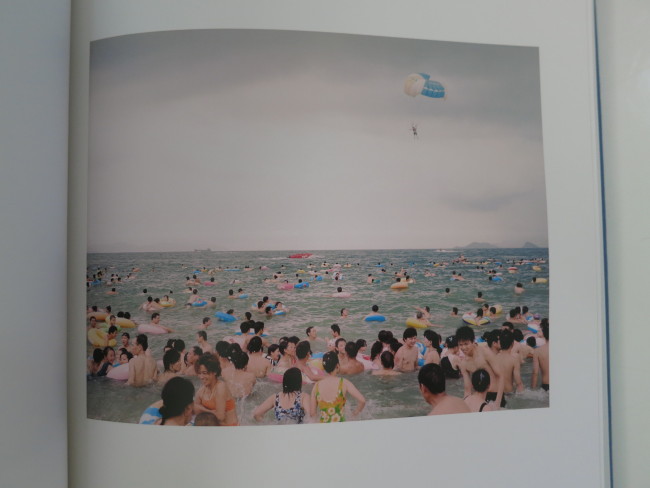
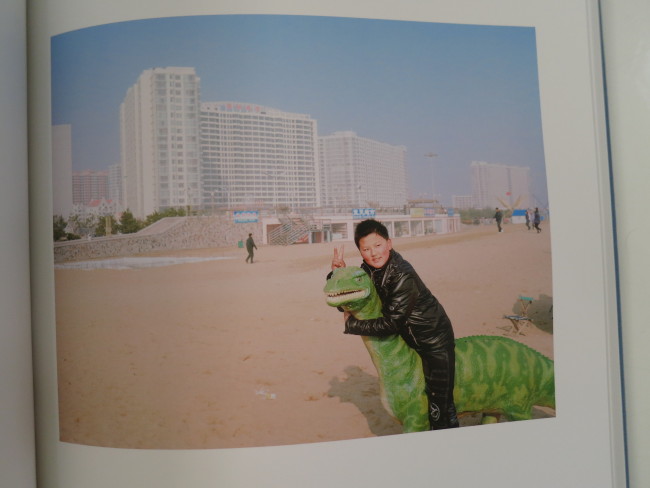


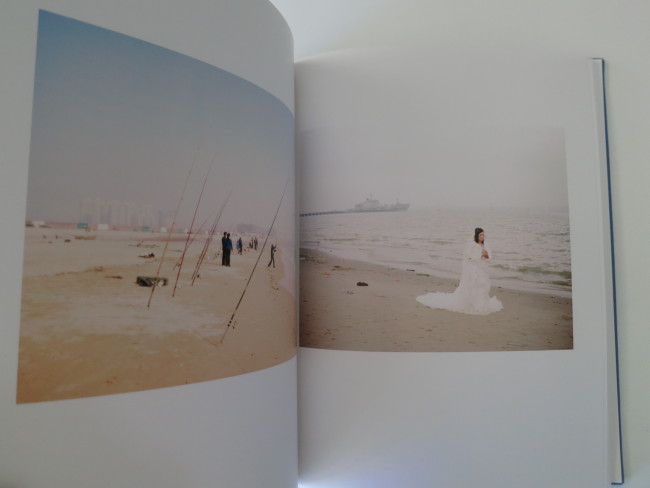
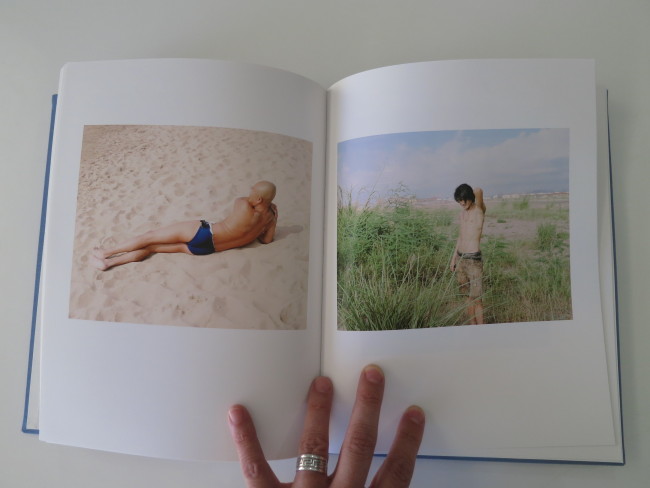
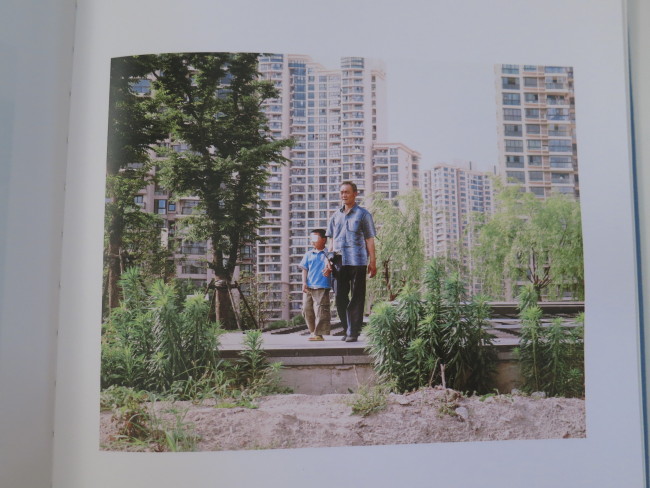
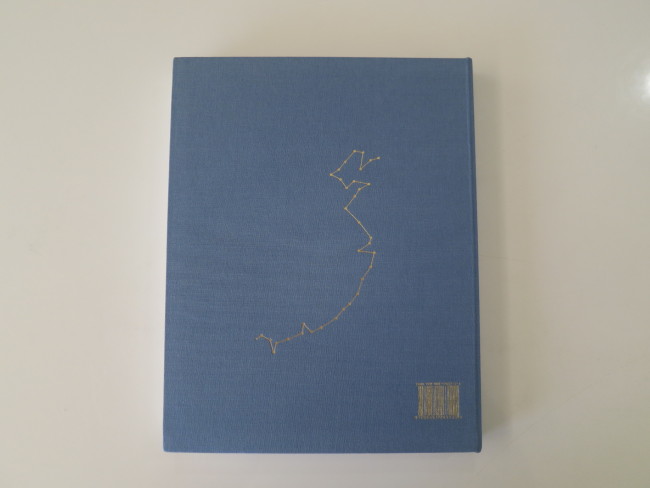
2 Comments
Its a truly great book! And for the weddings…First they wear white dress and after the ceremony they change to red one that more traditional but also bit more “casual” look for the drinking part…
Dude, thanks for chiming in. Appreciate the expertise from a Beijing-based photographer. Congrats again on all the success with your North Korea work.
But what about censorship? Do you know if photographers have to submit their
work for approval?
Comments are closed for this article!